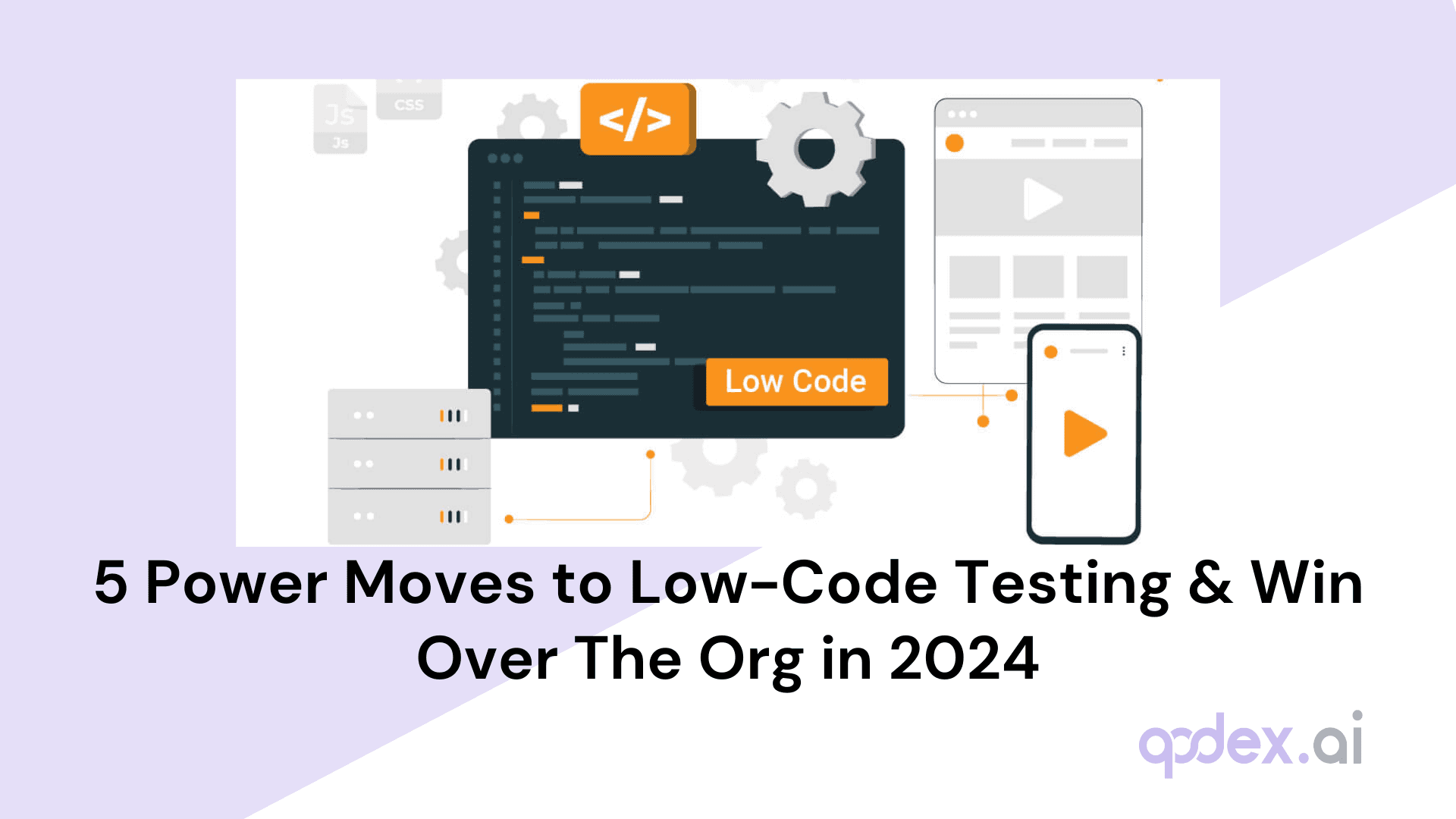Types, Tools, and Practices of Integration Testing
Introduction
Integration testing is a critical phase in the software development lifecycle (SDLC) where different modules or components of an application are combined and tested as a group.
It ensures that integrated modules function correctly together, identifying interface defects and ensuring seamless interaction. As software systems grow increasingly complex, evolving and updating testing methodologies becomes essential to maintain robust and reliable applications.
In this guide, we'll explore various types of integration testing, discuss the best tools available, and provide practical insights and best practices to enhance your integration testing strategy.
Whether you're a developer, QA tester, or project manager, understanding these aspects will help you ensure that your integrated modules work flawlessly together, providing a solid foundation for your application's success.
Types of Integration Testing
Integration testing can be approached in several ways, depending on the project requirements and the development stage. Here’s an overview of the most common types:
Big-Bang Integration Testing
Overview: All or most modules are integrated simultaneously and tested as a whole.
Benefits: Saves time by testing all modules at once.
Challenges: Can lead to complex debugging if issues arise due to the sheer number of integrated components.
Bottom-Up Integration Testing
Overview: Testing starts with lower-level modules and progresses upwards.
Benefits: Useful when lower-level modules are ready early, allowing for early detection of foundational issues.
Challenges: Higher-level functionalities are tested later in the process, which may delay the discovery of top-level integration issues.
Top-Down Integration Testing
Overview: Testing begins with top-level modules and moves down to sub-modules.
Benefits: Allows early testing of high-level functionality and major workflows.
Challenges: Lower-level modules might require stubs, which can complicate the testing process.
Mixed Integration Testing (Sandwich Approach)
Overview: Combines aspects of both top-down and bottom-up approaches.
Benefits: Leverages the advantages of both strategies, providing a balanced testing approach.
Challenges: Can be complex to manage due to the dual focus on top and bottom-level modules simultaneously.
Incremental Integration Testing
Overview: Modules are integrated and tested one by one.
Benefits: Facilitates easier identification and isolation of defects as each module is tested incrementally.
Challenges: Can be time-consuming as each module requires separate integration and testing cycles.
Understanding these types and choosing the right approach based on your project needs is crucial for effective integration testing.
Each method has its strengths and challenges, and selecting the appropriate strategy can help streamline the integration process and enhance the overall quality of your software.
Now that we’ve covered the types of integration testing, let’s dive into the tools that can help you execute these tests efficiently.
Tools for Integration Testing
Choosing the right tool for integration testing is crucial for ensuring seamless interactions between different software modules.
Here are some top tools for integration testing, each with unique features to cater to various needs.
Qodex
Qodex offers a comprehensive suite of integration testing solutions designed to ensure seamless module interaction and overall system functionality.
Features:
200% Faster Development: Ship bug-free software 200% faster.
20% Testing Budget: Achieve results with only 20% of the traditional testing budget.
AI Software Test Engineer: Integrate an AI-powered software test engineer into your development teams.
Integration: Compatible with your preferred tech stack, development tools, and workflows. Connects with product documentation, code bases, and other resources to understand business nuances and product flows.
AI Capabilities: Continuous test coverage, knowledge base sharing, and AI-generated exhaustive test suite that QA Engineers can review and refactor using natural language conversations.
API and UI Testing: Maintains exhaustive functional test cases and covers penetration, security, compliance, and load testing.
Workflow: Quickly build your first test suite, review and maintain it, run tests and review reports, and get release notes with the changelog upon shipping.
Benefits:
Human-Like QA Engineer: Operates like a human QA engineer but is super-powerful and lightning-fast.
Small Effort, Big Returns: Continuous high automation test coverage, 90% reduction in bugs, 200% faster testing and deployment workflow, and 80% reduction in QA costs.
Key Highlights: Loved by developers, efficient testing, reduces bugs, accelerates testing and deployment, and cuts QA costs significantly.
Get started with Qodex for integration testing
Citrus
Overview: Citrus is an open-source testing framework specifically designed for integration testing.
Features:
Supports error recreation and database validation.
Enables comprehensive integration testing across different systems.
LDRA
Overview: LDRA offers multiple toolsets tailored for integration and unit testing.
Features:
Automates evidence and certification processes.
Provides robust testing capabilities for various environments.
Protractor
Overview: Protractor is an open-source automation tool designed for end-to-end testing of web applications.
Features:
Suited for testing from an end-user perspective.
Integrates seamlessly with popular development frameworks.
Tessy
Overview: Tessy specializes in embedded software testing.
Features:
Supports multiple programming languages.
Provides detailed and comprehensive test reports.
Using these tools, you can ensure that your software modules interact seamlessly, enhancing the overall quality and functionality of your applications.
Choosing the right tool depends on your specific project needs, technical requirements, and desired outcomes.
Integration Testing Process
The integration testing process is a systematic approach to ensure that different modules or components of a software application work seamlessly together.
Here’s a step-by-step guide to effectively carry out integration testing:
Identify Components:
The first step is to determine which parts of the system need to be tested together. Identify all the modules and their interdependencies to create a comprehensive integration test plan.Develop a Test Plan:
Outline the scenarios and test cases to be executed. Your test plan should detail the objectives, scope, and approach for testing. It should include:Test scenarios and conditions
Test data requirements
Expected results
Resources needed
Set Up Test Environment:
Ensure the test environment mirrors the production environment as closely as possible to get accurate results. This setup should include:Required hardware and software
Network configurations
Test data
Necessary tools and frameworks
Execute Tests:
Begin with critical interaction scenarios between modules. Execute the planned test cases methodically, observing the interactions between integrated modules. Pay close attention to:Data flow between modules
Communication interfaces
System performance under load
Analyze Results:
After executing the tests, analyze the results to identify any issues. Investigate failures and document any defects found. This step involves:Comparing actual results with expected outcomes
Logging defects in a tracking system
Providing detailed feedback for developers
Repeat Testing:
Integration testing is an iterative process. Continue testing iteratively until all bugs are resolved and integration is stable. This might include:Re-testing after fixes
Regression testing to ensure new changes don’t affect existing functionality
By following these steps, you can ensure that your integrated modules work together seamlessly, providing a robust and reliable application.
Remember, the goal of integration testing is not just to identify defects but also to verify that the components function together as intended.
Best Practices for Integration Testing
Effective integration testing is crucial for ensuring that different modules of your software work seamlessly together. Here are some best practices to follow to make your integration testing process more efficient and effective:
Begin Early in the Development Lifecycle
Starting integration testing early allows you to identify and resolve issues before they become more complex and costly. Integrate and test smaller units frequently to catch defects at the earliest stages.Determine the Right Testing Strategy
Choose an integration testing strategy that fits your project needs. Whether it's Big-Bang, Bottom-Up, Top-Down, or Incremental, the strategy should align with your project’s architecture and development process.For example, Big-Bang Integration Testing is useful for projects with well-defined module interfaces but can lead to complex debugging.
Prioritize and Focus on Critical Modules
Identify and prioritize the most critical modules and interactions in your system.Focus your initial testing efforts on these areas to ensure that the core functionalities work correctly before moving on to less critical components.
Prepare Mock Data
Mock data simulates real-world scenarios and interactions without relying on actual live data.This ensures that tests are repeatable and independent of external data changes. Mocking can help isolate specific issues and make debugging easier.
Document All Test Results and Observations
Maintain detailed records of your test cases, results, and any anomalies observed.Documentation helps track progress, facilitates better communication among team members, and provides a reference for future testing cycles.
Balance Automated and Manual Testing
While automated testing is efficient for repetitive tasks and regression tests, manual testing is essential for exploratory and ad-hoc testing.Tools like Qodex can automate repetitive tasks, freeing up testers to focus on more complex, exploratory testing scenarios.
Leverage Continuous Integration (CI) Tools
Integrate your testing tools with CI tools like Jenkins or GitLab CI to automate the testing process. Continuous testing ensures that every change is tested immediately, providing quick feedback and maintaining code quality.Collaborate and Communicate Effectively
Effective communication among team members is crucial. Regularly discuss test results, issues, and progress in team meetings.Tools that offer shared reporting features can help keep everyone on the same page.
Iterate and Improve Based on Feedback
Integration testing should be an iterative process. Use feedback from each testing cycle to refine your test cases, strategies, and processes. Continuous improvement is key to maintaining high-quality integration tests.
By implementing these best practices, you can enhance the efficiency and effectiveness of your integration testing efforts, ensuring smoother module interactions and a more reliable software product.
For advanced integration testing capabilities, consider leveraging tools like Qodex, which offer automated test creation, continuous test coverage, and seamless integration with your existing tech stack.
For more details on how Qodex can help streamline your integration testing process, visit Qodex AI.
Conclusion
Integration testing is a critical step in the software development lifecycle, ensuring that all components of your application work seamlessly together. By adopting best practices like early testing, prioritizing critical modules, and balancing automated and manual tests, you can significantly enhance your integration testing process.
Tools such as Qodex offer advanced features for continuous test coverage, automated test creation, and seamless integration with your existing development tools, making them invaluable in modern testing environments.
Effective integration testing not only improves the quality and reliability of your software but also contributes to smoother project delivery and better user experiences.
For more insights on how Qodex can revolutionize your integration testing efforts, visit Qodex AI.
Frequently Asked Questions
Why should you choose Qodex.ai?
Qodex.ai simplifies and accelerates the API testing process by leveraging AI-powered tools and automation. Here's why it stands out:
- AI-Powered Automation
Achieve 100% API testing automation without writing a single line of code. Qodex.ai’s cutting-edge AI reduces manual effort, delivering unmatched efficiency and precision.
- User-Friendly Platform
Effortlessly import API collections from Postman, Swagger, or application logs and begin testing in minutes. No steep learning curves or technical expertise required.
- Customizable Test Scenarios
Whether you’re using AI-assisted test generation or creating test cases manually, Qodex.ai adapts to your needs. Build robust scenarios tailored to your project requirements.
- Real-Time Monitoring and Reporting
Gain instant insights into API health, test success rates, and performance metrics. Our integrated dashboards ensure you’re always in control, identifying and addressing issues early.
- Scalable Collaboration Tools
Designed for teams of all sizes, Qodex.ai offers test plans, suites, and documentation that foster seamless collaboration. Perfect for startups, enterprises, and microservices architecture.
- Cost and Time Efficiency
Save time and resources by eliminating manual testing overhead. With Qodex.ai’s automation, you can focus on innovation while cutting operational costs.
- Continuous Integration/Delivery (CI/CD) Compatibility
Easily integrate Qodex.ai into your CI/CD pipelines to ensure consistent, automated testing throughout your development lifecycle.
How can I validate an email address using Python regex?
You can use the following regex pattern to validate an email address: ^[a-zA-Z0-9._%+-]+@[a-zA-Z0-9.-]+\.[a-zA-Z]{2,}$
What is Go Regex Tester?
Go Regex Tester is a specialized tool for developers to test and debug regular expressions in the Go programming environment. It offers real-time evaluation of regex patterns, aiding in efficient pattern development and troubleshooting
Discover, Test, & Secure your APIs 10x Faster than before
Auto-discover every endpoint, generate functional & security tests (OWASP Top 10), auto-heal as code changes, and run in CI/CD - no code needed.
Related Blogs


